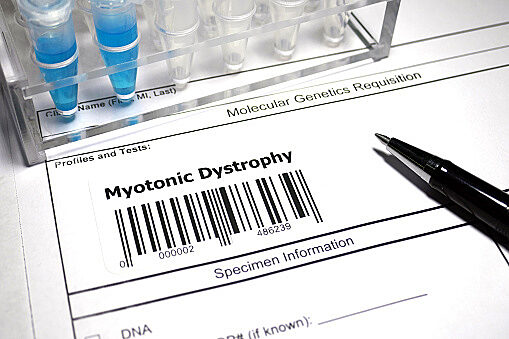University of Florida Health researchers gain new insight into muscular dystrophy gene

University of Florida Health researchers are gaining new insights into cells linked to a genetic mutation that causes a type of muscular dystrophy.
Using genome editing, the researchers developed mice that replicate the developmental timing of a dysfunctional gene that causes myotonic dystrophy type 1, or DM1. They then showed that two types of cells — precursor cells needed for muscle regeneration and epithelial cells in the brain that help produce cerebral spinal fluid — are particularly sensitive to the DM1 mutation.
The findings were published recently in the journal Genes & Development by a research team led by Maurice Swanson, Ph.D., a professor in the UF College of Medicine’s Department of Molecular Genetics and Microbiology and Associate Director of the UF Center for NeuroGenetics.
The findings are significant because they provide important insights into two characteristic features of the disease — muscle wasting and brain tissue loss — that also occur during the normal aging process, Swanson said.
Myotonic dystrophy type 1 causes muscles in the face, neck, and lower arms and legs to get weak and shrink. Muscles that drive the heart and control breathing can weaken as the disease progresses. Myotonic dystrophy affects 1 of every 8,000 people worldwide.
Researchers from the UF College of Medicine’s Department of Molecular Genetics and Microbiology and the Department of Anatomy and Cell Biology collaborated on the project. It was funded by the National Institutes of Health, the National Institute of Neurological Disorders and the Muscular Dystrophy Association.
About the author
